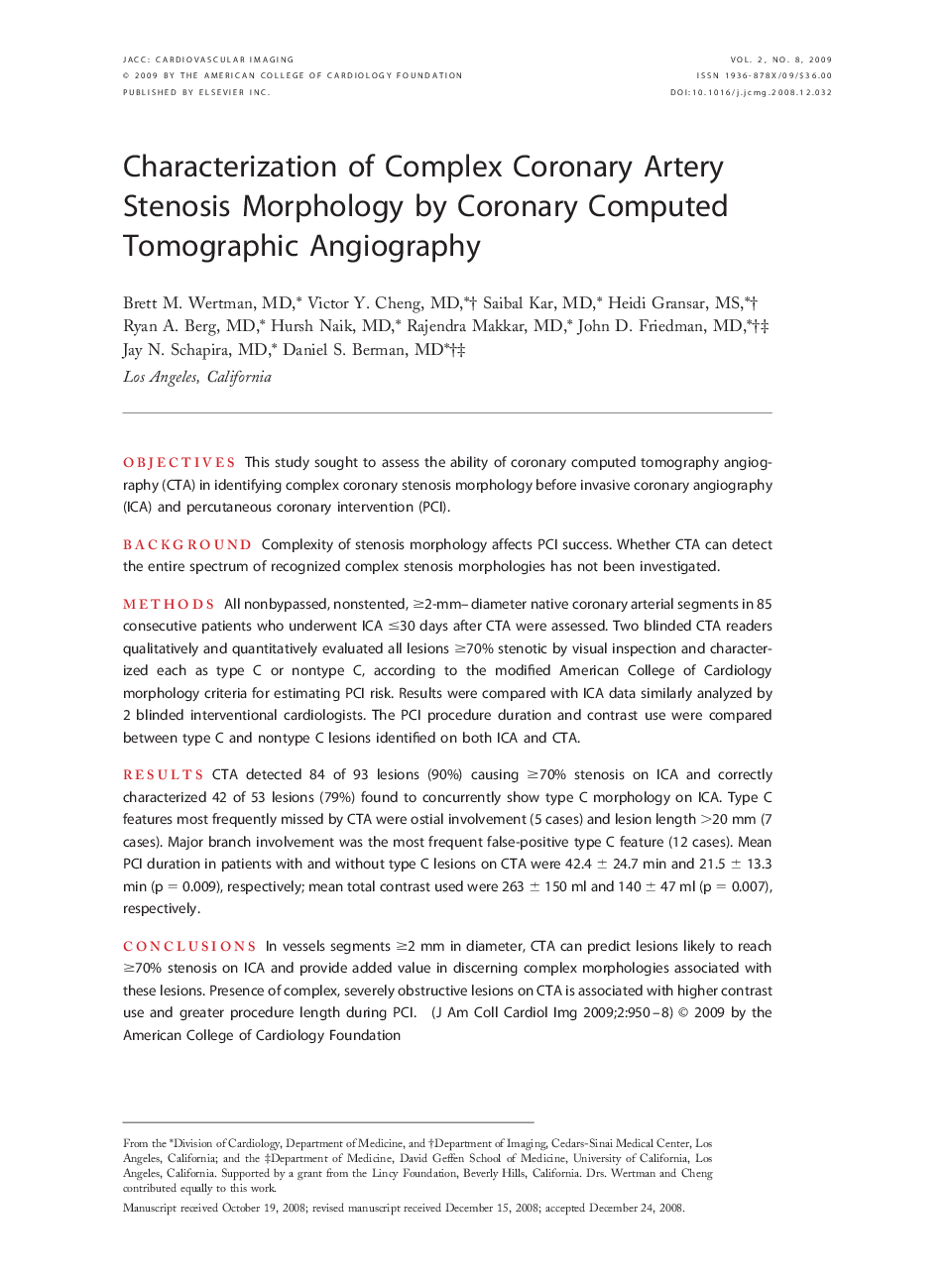| Article ID | Journal | Published Year | Pages | File Type |
|---|---|---|---|---|
| 2939247 | JACC: Cardiovascular Imaging | 2009 | 9 Pages |
ObjectivesThis study sought to assess the ability of coronary computed tomography angiography (CTA) in identifying complex coronary stenosis morphology before invasive coronary angiography (ICA) and percutaneous coronary intervention (PCI).BackgroundComplexity of stenosis morphology affects PCI success. Whether CTA can detect the entire spectrum of recognized complex stenosis morphologies has not been investigated.MethodsAll nonbypassed, nonstented, ≥2-mm–diameter native coronary arterial segments in 85 consecutive patients who underwent ICA ≤30 days after CTA were assessed. Two blinded CTA readers qualitatively and quantitatively evaluated all lesions ≥70% stenotic by visual inspection and characterized each as type C or nontype C, according to the modified American College of Cardiology morphology criteria for estimating PCI risk. Results were compared with ICA data similarly analyzed by 2 blinded interventional cardiologists. The PCI procedure duration and contrast use were compared between type C and nontype C lesions identified on both ICA and CTA.ResultsCTA detected 84 of 93 lesions (90%) causing ≥70% stenosis on ICA and correctly characterized 42 of 53 lesions (79%) found to concurrently show type C morphology on ICA. Type C features most frequently missed by CTA were ostial involvement (5 cases) and lesion length >20 mm (7 cases). Major branch involvement was the most frequent false-positive type C feature (12 cases). Mean PCI duration in patients with and without type C lesions on CTA were 42.4 ± 24.7 min and 21.5 ± 13.3 min (p = 0.009), respectively; mean total contrast used were 263 ± 150 ml and 140 ± 47 ml (p = 0.007), respectively.ConclusionsIn vessels segments ≥2 mm in diameter, CTA can predict lesions likely to reach ≥70% stenosis on ICA and provide added value in discerning complex morphologies associated with these lesions. Presence of complex, severely obstructive lesions on CTA is associated with higher contrast use and greater procedure length during PCI.
